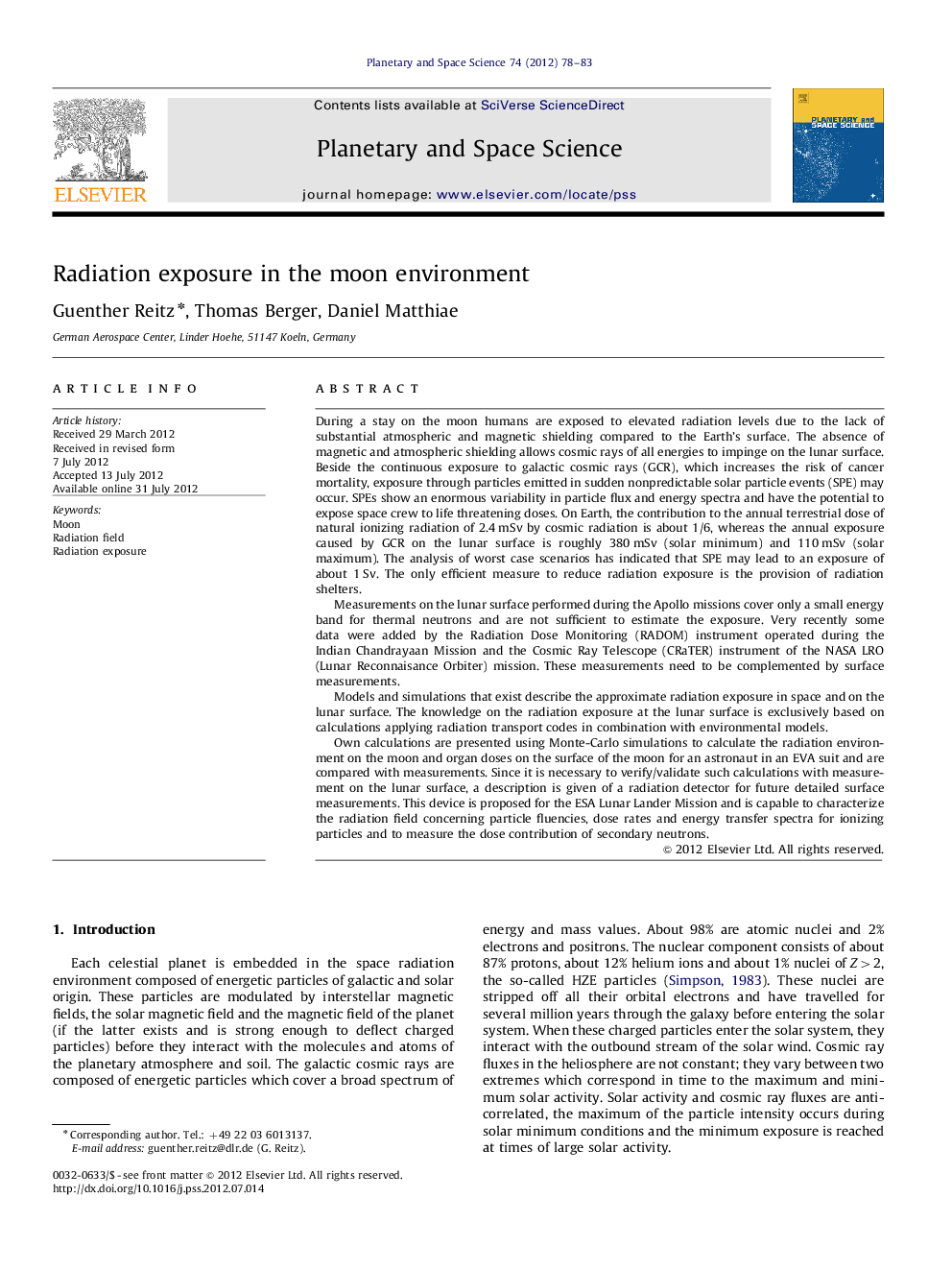| کد مقاله | کد نشریه | سال انتشار | مقاله انگلیسی | نسخه تمام متن |
|---|---|---|---|---|
| 1781385 | 1022276 | 2012 | 6 صفحه PDF | دانلود رایگان |

During a stay on the moon humans are exposed to elevated radiation levels due to the lack of substantial atmospheric and magnetic shielding compared to the Earth's surface. The absence of magnetic and atmospheric shielding allows cosmic rays of all energies to impinge on the lunar surface. Beside the continuous exposure to galactic cosmic rays (GCR), which increases the risk of cancer mortality, exposure through particles emitted in sudden nonpredictable solar particle events (SPE) may occur. SPEs show an enormous variability in particle flux and energy spectra and have the potential to expose space crew to life threatening doses. On Earth, the contribution to the annual terrestrial dose of natural ionizing radiation of 2.4 mSv by cosmic radiation is about 1/6, whereas the annual exposure caused by GCR on the lunar surface is roughly 380 mSv (solar minimum) and 110 mSv (solar maximum). The analysis of worst case scenarios has indicated that SPE may lead to an exposure of about 1 Sv. The only efficient measure to reduce radiation exposure is the provision of radiation shelters.Measurements on the lunar surface performed during the Apollo missions cover only a small energy band for thermal neutrons and are not sufficient to estimate the exposure. Very recently some data were added by the Radiation Dose Monitoring (RADOM) instrument operated during the Indian Chandrayaan Mission and the Cosmic Ray Telescope (CRaTER) instrument of the NASA LRO (Lunar Reconnaisance Orbiter) mission. These measurements need to be complemented by surface measurements.Models and simulations that exist describe the approximate radiation exposure in space and on the lunar surface. The knowledge on the radiation exposure at the lunar surface is exclusively based on calculations applying radiation transport codes in combination with environmental models.Own calculations are presented using Monte-Carlo simulations to calculate the radiation environment on the moon and organ doses on the surface of the moon for an astronaut in an EVA suit and are compared with measurements. Since it is necessary to verify/validate such calculations with measurement on the lunar surface, a description is given of a radiation detector for future detailed surface measurements. This device is proposed for the ESA Lunar Lander Mission and is capable to characterize the radiation field concerning particle fluencies, dose rates and energy transfer spectra for ionizing particles and to measure the dose contribution of secondary neutrons.
► Overview of existing data.
► Calculation of the radiation environment on the moon using numerical methods.
► Calculation of organ doses on the surface on the moon for an astronaut in an EVA suit.
► Description of a radiation sensor for future surface measurements.
Journal: Planetary and Space Science - Volume 74, Issue 1, December 2012, Pages 78–83